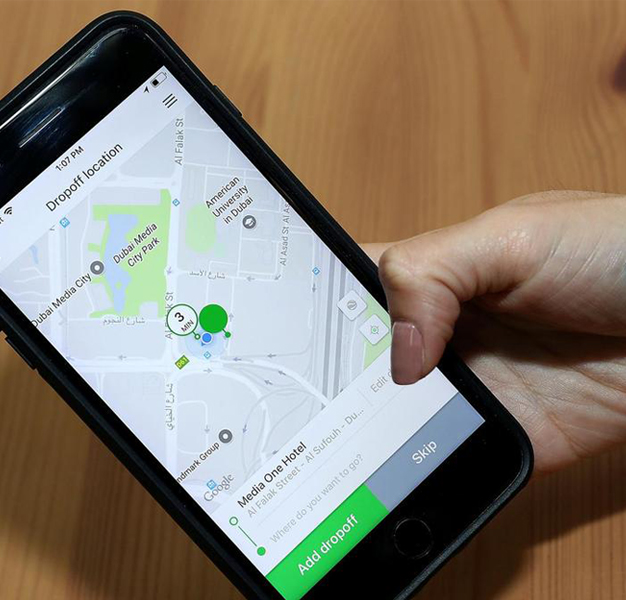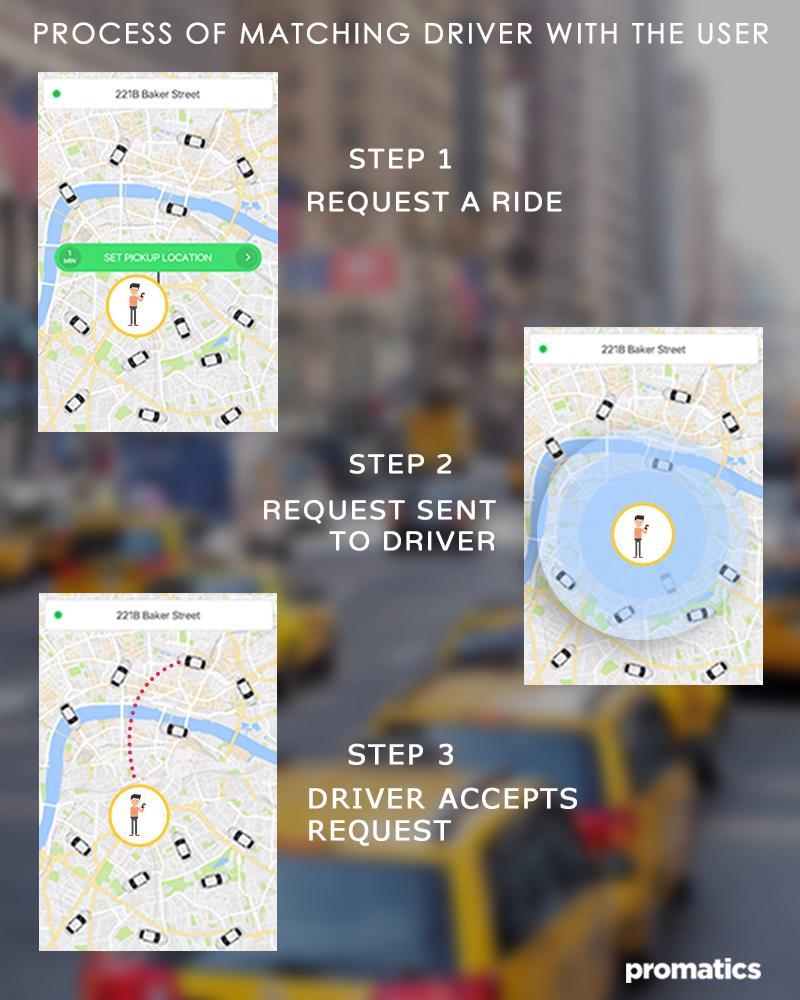What goes behind a ride hailing app’s matching algorithm?
What started as an idea on a wintry evening in Paris way back in 2007, blossomed into a functioning ride hailing service in 2010. Uber received just $1.25 million funding in October 2010 and is currently one of the most successful tech startups in the world. Uber’s ride-sharing business generated a staggering $9.2 billion in 2018. Its competitor Lyft generated $2.1 billion.
The technology is seemingly simple. A rider opens the on-demand app, chooses a service and is matched with a driver who then completes the ride.
What makes ride hailing applications such as Uber and Lyft tick and why is this business model so successful? Let us take a look at these aspects in this article.
How a ride hailing app functions?
Initially, a customer has to register for an account and verify identity. Once identify verification is completed successfully, customers can look for the nearest cab available to them. They can also choose the kind of vehicle or driver they want. Premium options offer experienced drivers and better cars. At the lower end, customers can choose to ride alongside other passengers who have similarly booked to share a ride.
For both the customer and the driver, all this may seem quite simple. However, there is a complex algorithm at play which matches the customer with the right vehicle to avoid unnecessary delays and confrontations. Most importantly, it allows both the customer and the driver to have a satisfactory ride experience. What makes this experience seem seamless and intuitive is the Buyer Pick Model.
Understanding the Buyer Pick Model
Buyer Pick Model is an algorithmic model that allows the customer to enter details or set filters in order to be presented with a list of service providers who meet the criteria. After taking a good look at the options available, the buyer chooses a particular service provider who may or may not accept a task request.
a.) In case of ride hailing apps, this usually happens automatically.
b.) The customer sets certain filters, such as choosing the kind of ride they want, and the algorithm automatically identifies the nearest available cab/driver that match filters and present a fare.
c.) If the buyer is satisfied with the fare displayed, he/she can confirm the request and the nearest willing driver is matched for the ride.
Ride hailing services usually involve a Double Commit model, in which both the customer and the driver commit to completing the ride. This means, once a rider accepts a fare and confirms their willingness to take a ride, the driver can choose to accept or reject the request.
Ride hailing apps also employ hard and soft filters that make the process of matching riders and drivers seamless. The idea is to provide the best experience to both the drivers and the riders.
- Hard filters ensure that drivers and customers have a comfortable ride
Hard filters can be set by both customers and riders depending on their preferences. These refer to criteria that need to be met for a particular match to take place. Some of the hard filters include the type of service a customer chooses, the location from where they need to be picked up from, price-related criteria and the time when they would like to be picked up. Some ride-hailing applications also allow customers to choose the gender of the driver, especially in countries where people maybe vulnerable to attacks. In other words, hard filters are criteria that have to be met compulsorily. Otherwise, the algorithm will not match a customer with a driver at all.
- Soft filters narrow down results and work in the background
Soft filters, on the other hand, narrow down or sort the options of the customer. These include estimated time of pick up or arrival, the type of vehicle they may want to hire, such as a sedan or an SUV, or the ratings of the driver/customer. Soft filters also ensure that a particular driver is not overloaded with ride requests, thus balancing a driver’s load. In addition, algorithms engage in route optimization so that the driver does not have to travel too far to pick up a customer. Soft filters are used in a more nuanced manner and both customers and drivers may not realize that these filters are quietly working in the background of a ride hailing application’s algorithm.
The future of matching algorithms
With the rise of artificial intelligence and predictive analytics, it may become easier for algorithms to match customers and riders efficiently. In many instances, drivers and customers who have rated each other poorly are matched by mistake. Such errors can be avoided with the help of artificial intelligence. Predictive analytics can avert matching drunk customers with riders who have serious issues with picking up inebriated passengers.
In addition, algorithms may become advanced enough to enable startups to offer niche services and rides to vulnerable groups without them having to specify anything. For instance, disabled people may get matched with a driver who is probably trained in special assistance. It isn’t an exaggeration to say that the future of matching algorithms lie in predictive analytics and artificial intelligence.
Key takeaways
Ride hailing apps have mushroomed across the world in recent years. Though Uber remains the undisputed leader in major markets, there are several competing on-demand ride hailing apps. This trend is likely to continue and more on-demand services that cater to niche customers will begun to pop up. Vulnerable groups, specific requirements, and customer experience can all be part of the algorithmic criteria that will be taken into account in future updates to ride hailing apps. Thanks to artificial intelligence and Big Data, we can expect ride hailing algorithms to get more intelligent and provide a better experience to both customers and drivers.
Still have your concerns?
Your concerns are legit, and we know how to deal with them. Hook us up for a discussion, no strings attached, and we will show how we can add value to your operations!

